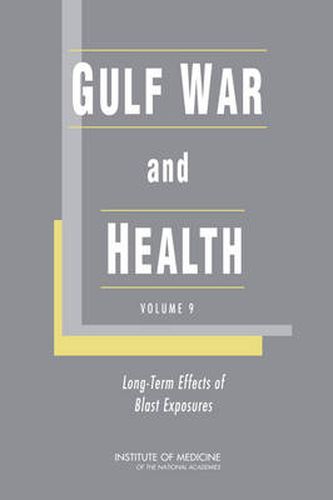Readings Newsletter
Become a Readings Member to make your shopping experience even easier.
Sign in or sign up for free!
You’re not far away from qualifying for FREE standard shipping within Australia
You’ve qualified for FREE standard shipping within Australia
The cart is loading…






Since the United States began combat operations in Afghanistan in October 2001 and then in Iraq in March 2003, the numbers of US soldiers killed exceed 6,700 and of US soldiers wounded 50,500. Although all wars since World War I have involved the use of explosives by the enemy, the wars in Afghanistan and Iraq differ from previous wars in which the United States has been involved because of the enemy’s use of improvised explosive devices (IEDs). The use of IEDs has led to an injury landscape different from that in prior US wars. The signature injury of the Afghanistan and Iraq wars is blast injury. Numerous US soldiers have returned home with devastating blast injuries and they continue to experience many challenges in readjusting to civilian life. Gulf War and Health, Volume 9 is an assessment of the relevant scientific information and draws conclusions regarding the strength of the evidence of an association between exposure to blast and health effects. The report also includes recommendations for research most likely to provide VA with knowledge that can be used to inform decisions on how to prevent blast injuries, how to diagnose them effectively, and how to manage, treat, and rehabilitate victims of battlefield traumas in the immediate aftermath of a blast and in the long term.
$9.00 standard shipping within Australia
FREE standard shipping within Australia for orders over $100.00
Express & International shipping calculated at checkout
Since the United States began combat operations in Afghanistan in October 2001 and then in Iraq in March 2003, the numbers of US soldiers killed exceed 6,700 and of US soldiers wounded 50,500. Although all wars since World War I have involved the use of explosives by the enemy, the wars in Afghanistan and Iraq differ from previous wars in which the United States has been involved because of the enemy’s use of improvised explosive devices (IEDs). The use of IEDs has led to an injury landscape different from that in prior US wars. The signature injury of the Afghanistan and Iraq wars is blast injury. Numerous US soldiers have returned home with devastating blast injuries and they continue to experience many challenges in readjusting to civilian life. Gulf War and Health, Volume 9 is an assessment of the relevant scientific information and draws conclusions regarding the strength of the evidence of an association between exposure to blast and health effects. The report also includes recommendations for research most likely to provide VA with knowledge that can be used to inform decisions on how to prevent blast injuries, how to diagnose them effectively, and how to manage, treat, and rehabilitate victims of battlefield traumas in the immediate aftermath of a blast and in the long term.